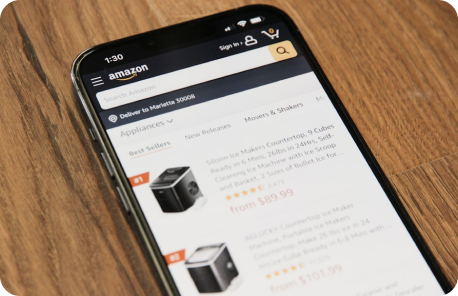You booked a hotel in Tokyo. After a long flight, you want to check in and crash. But when you open the app, the pricing looks off, the interface is only partially translated, and the check-in date format is confusing.
You're experiencing an issue that your app developer might have missed due to insufficient localization testing. These kinds of lapses confuse users, break their trust, and often cause them to abandon the product altogether.
If you develop apps or websites and want to expand globally, you need proper localization QA testing. Localization ensures that users experience seamless international language transitions, accurate formatting, intuitive usability, culturally relevant logic, and region-specific design. If users can't navigate or enter information, your product will likely fail.
Effective localization testing starts with designing the right scenarios. You and your testing partner need to create test cases that accurately reflect how users interact with your product in their local environments.
Let's take a deep dive into what localization testing is and learn how to get started with it.
What is Localization Testing?
Localization testing ensures your product works naturally and feels native in every supported region. It's a key part of global growth, especially for apps and websites that need to connect with users in their preferred language, format, and cultural context.
It applies to nearly every part of a digital experience:
- Navigation menus and UI elements
- Dates, times, currencies, and units of measurement
- Input fields for local phone numbers or postal codes
- Error messages, help content, and microcopy
- Media assets, visual design, and page layout
- Compliance labels and regulatory language

Localization testing usually happens after translation and internationalization (i18n) are complete, and just before a regional release. Teams may also run smaller test cycles before feature rollouts or marketing campaigns aimed at specific regions.
Why is Localization Testing Important?
Well-localized products build credibility. They show users that you've done more than push your app through machine translation. They feel considered, intuitive, and trustworthy, and users reward that effort.
Localization testing helps you get it right the first time. Without it, the layout can break, pricing may display incorrectly, or translated content might confuse or offend. Forms could reject local characters or phone numbers. Even minor errors—such as untranslated buttons or awkward phrasing—can leave users feeling like your product wasn't designed for them.
CSA Research found that 76% of online shoppers like product info in their native language. Another study by Emplicit found solid localization can increase conversion rates by 13–70%. It also boosts customer loyalty by 47% and satisfaction by 53%.
Your reputation is on the line here. Users won't put up with mistakes like untranslated buttons or broken forms. That means bad reviews. Or worse, they ditch your product altogether.

How Does Localization Differ from Translation?
Let's talk about this common point of confusion. It's important to understand the difference. Translation is about converting words. It focuses on meaning, tone, and accuracy from one language to another.
Localization is broader. It includes translation, but also adapts content to optimal formatting, flow, usability, regulatory, and cultural differences. For example, you might translate "Welcome" into Arabic perfectly. But if you don't mirror the layout to read right-to-left, or your text bleeds out of a fixed-width button, you've failed to localize.
A successful translation sounds natural. Effective localization makes the product feel as if it were built locally from the start.
The Process of Localization Testing
Step 1: Prepare for Internationalization (i18n)
Before you localize, ensure your product supports localization. That means separating content from code, avoiding hard-coded text, allowing for flexible UI components, and planning for variable character lengths and directionality.
Step 2: Define Test Coverage
Decide which languages, regions, features, and devices you are testing. Prioritize based on target market size, compliance needs, and business impact.
Step 3: Build Realistic Test Cases
Design test cases that reflect how users in each region actually use your product, from reading translated content to completing everyday tasks. Your goal is simple: Make sure someone in Seoul has the same smooth experience as someone in Seattle.
Step 4: Execute the Tests
Test on real devices with actual testers from your target area whenever possible. Automation has its limits here. Human judgment is crucial for identifying visual, cultural, and contextual errors.
Step 5: Validate Results
Localization testing generally includes three types of validation:
- Visual validation: Does the layout adjust properly? Are fonts legible? Is RTL alignment respected?
- Linguistic validation: Are translations idiomatic, accurate, and appropriate for the context?
- In-context review: Does everything work together as expected during an actual user flow?
Log and prioritize every defect. It can resolve current issues and make your future test cases more effective.
Examples of Localization Test Scenarios
The most effective test cases are grounded in real-life use. Some of the most common include:
- Language: Verifying translations for menu items, prompts, confirmation messages, and notifications.
- Formatting: Ensuring numbers, dates, and currencies follow local conventions.
- Cultural norms: Checking symbols, images, gestures, or colors for unintended meanings.
- UI responsiveness: Ensuring the layout remains stable when text expands or changes direction.
- Input validation: Process and accept local names, address formats, phone numbers, and ID numbers.
- Media and visuals: Replacing maps, icons, or screenshots with region-specific versions as needed.
Each element needs its own test case. Better yet, create a test flow that mirrors a real user's journey through your app or site, from first click to checkout.

Finding an Onshore Localization Testing Partner
Localization testing involves blending language skills with QA expertise. Many teams find this more challenging than they initially thought.
Offshore solutions often seem appealing, especially when you need native speakers. But working across time zones can slow things down and make it tougher to align expectations and ensure quality.
At PLUS QA, we have a team of localization QA testers who speak the languages they test. Plus, we train them for functional QA and usability evaluation. They help our clients identify issues that automated tools or pure translators may miss.
For example: In an Airbnb RTL localization project, PLUS QA testers identified a button-alignment glitch that appeared when switching from English to Arabic mid-checkout—an issue that automated tools often miss. They also spotted mismatched language in modals and tooltips that disrupted the booking flow. Developers implemented fixes before launch, saving time, money, and user frustration.
Conclusion
If you want your product to succeed globally, localization testing can't be an afterthought. It needs the same level of planning, design, and attention that you give your core features.
As your team prepares to scale into new markets, having the right QA partner can make the difference between a smooth rollout and costly rework. PLUS QA brings together language fluency, device testing, and QA precision to help you launch confidently and connect with users worldwide.
If you want to learn more about localization, explore our localization testing services and read our post, "Localization vs. Internationalization Testing: What's the Difference?"

